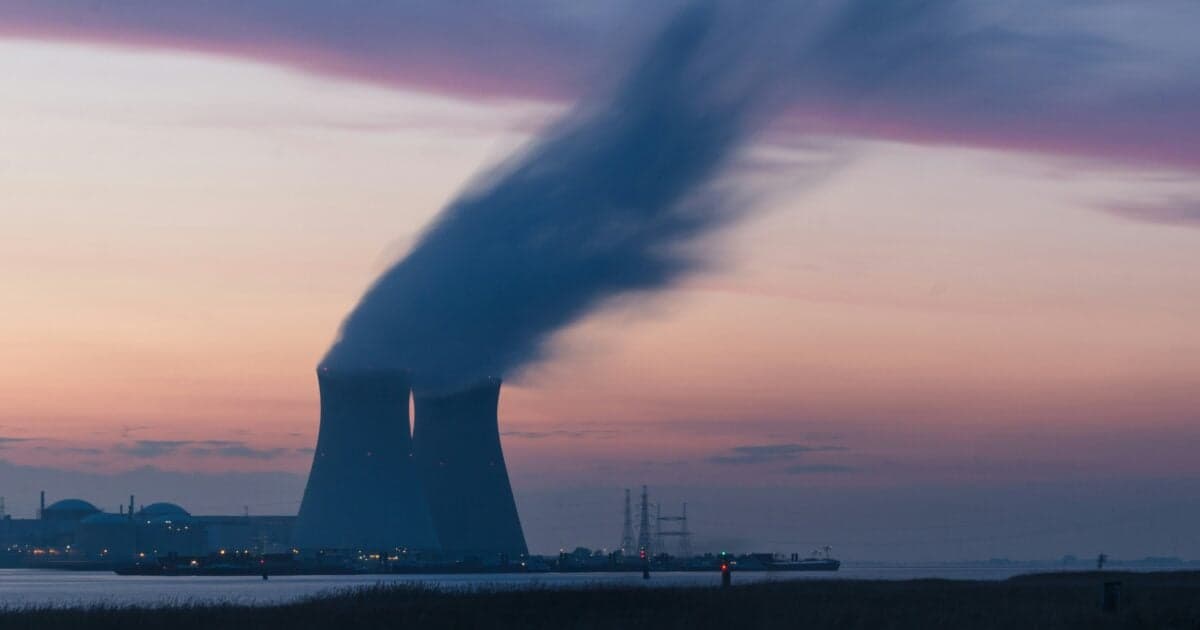Are Investors on the Brink of a 'Golden Age of Nuclear'?


Nuclear stocks are on the move again...
Yesterday, the U.S. signaled it would build up its strategic uranium reserve even further to strengthen nuclear-fuel supply chains.
The U.S. currently holds about 14 months of nuclear fuel inventory, according to the International Atomic Energy Agency... much less than the two and a half years of uranium in the European Union and China's 12-year stockpile.
The news was more confirmation of the most aggressive push for nuclear energy in decades.
Energy Secretary Chris Wright framed it as simple risk management in an unreliable world.
Currently, Russia supplies about 25% of the enriched uranium that fuels U.S. nuclear reactors, which generate about 20% of America's electricity. But as Wright told Bloomberg, "We're moving to a place – and we're not there yet – to no longer use Russian enriched uranium."
A bigger buffer of nuclear fuel means the lights stay on when geopolitics get ugly...
Inking a Major U.S.-U.K. Nuclear Deal
Across the Atlantic Ocean, U.K. Prime Minister Keir Starmer has announced a whirlwind of nuclear deals, including...
- A landmark deal between X-energy, a nuclear startup backed by Jeff Bezos' Amazon (AMZN) and British Gas owner Centrica. They plan to build up to 12 modular nuclear reactors, which could ultimately supply up to 14 million homes.
- U.S. tech company Holtec is partnering with French energy supplier EDF and property developer Tritax to pair small reactors with data centers.
- U.S. nuclear startup Last Energy is planning to build a microreactor at DP World's London Gateway port.
- Nuclear fuel company Urenco will supply an advanced type of low-enriched uranium to the U.S. market and will build a new U.K. facility.
- And U.S. nuclear startups TerraPower and KBR are proposing to build and deploy their small reactors around the U.K.
And to speed up these deals, the U.K. and the U.S. have jointly agreed to align parts of the licensing and regulatory process so that designs cleared in one country can move faster in the other. The goal is to cut approval times in half... from four years down to two.
A Combined $100 Billion in Deals
As Starmer put it, "Together with the U.S., we're building a golden age of nuclear that puts both countries at the forefront of global innovation and investment."
And of course, these deals are in addition to the existing small modular reactors ("SMRs") deal between Rolls-Royce (RR.L) and BWX Technologies (BWXT).
All together, these deals are worth a combined $100 billion or more.
President Donald Trump is expected to sign the deal, known as the Atlantic Partnership for Advanced Nuclear Energy, during his current visit to the U.K.
Of course, most of these companies are private, so regular investors can't yet get access.
But BWX Technologies was one of the seven nuclear stocks that Wall Street legend Whitney Tilson told viewers to watch this May...
BWXT is now up more than 60% since that interview... and Whitney's paid subscribers are up 100% since his initial recommendation. (Learn how to get access to Whitney's newsletter here to be first to act on his recommendations.)
The Rise of Nuclear Seems Inevitable...
For the first time in 20 years, electricity demand in the U.S. is rising. Heavy investment in artificial intelligence ("AI") and the necessity of data centers to house AI's computational needs is using an incredible amount of power...
This summer, U.S. electricity peak demand twice set a new record according to the U.S. Energy Information Administration. As we wrote a few months ago, mid-Atlantic grid operator PJM expects peak demand will grow 3% to 4% a year through 2035...
And while 3% to 4% growth sounds small, PJM announced prices at its last capacity auction that were up more than 800% from the previous year, thanks to rising demand and shrinking supply.
And my colleague Corey McLaughlin put the rising energy demands in perspective earlier this month:
The Environmental and Energy Study Institute estimates that U.S. data centers could require as much as 130 gigawatts of power every year by 2030.
That's enough to power, on average, about 114 million homes for a year. And that's the equivalent of a huge chunk of all of the housing (148 million units) in the U.S.
Not only would this new demand be a huge draw on utilities, but it would also mean data centers accounting for 12% of all electricity used in the U.S. (versus about 4.4% at the end of 2023).
Whitney has framed the investment case for nuclear in plain language... rising demand, constrained supply, strong government policy support, and a sector that is still early in a multiyear cycle.
But current nuclear power plants are still limited by their waste products and safety concerns. That's why Whitney is focused on what's coming next...
Nuclear Fusion Is Coming Sooner Than You Think
Investors looking further down the road... including nearly every Big Tech company... see fusion as the real goal. And its timeline is getting shorter. As Bloomberg reported this week:
"I believe we will know the commercial pathway to fusion during the Trump administration," Wright said, echoing comments he's made previously. "Commercial electricity from fusion energy could be as fast as eight years and I'd be very surprised if it's more than 15."
Fusion may be the only technology that scales fast enough and clean enough to satisfy the next generation of AI. Whitney puts it this way:
A nuclear fusion reaction releases four times more energy than nuclear fission... 4 million times more energy than oil and gas... and up to 10 million times more energy than coal. It creates limitless energy with no long-term radioactive waste.
That's why he has been pounding the table about what he's calling the Amazon Helios project. It's a "backdoor" way for Main Street investors to access two different nuclear fusion startups.
Whitney believes this is the best and safest way to play the fusion boom today...
Learn all about Amazon Helios in Whitney Tilson's latest documentary by clicking here.



